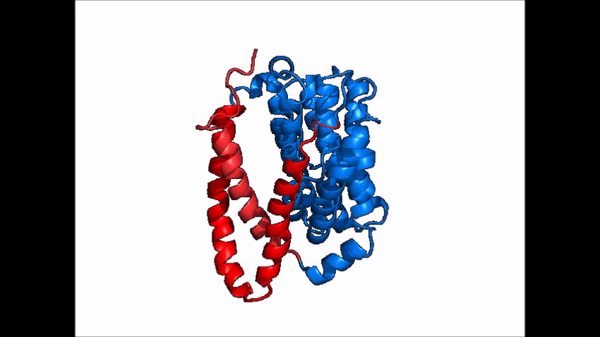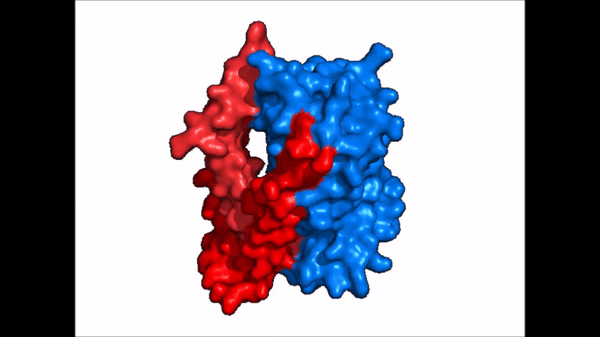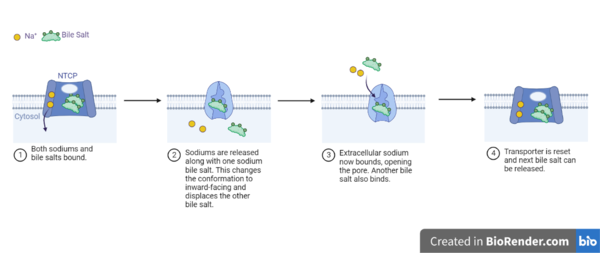Introduction
Sodium Taurocholate Co-Transporting Polypeptide, or NTCP, is a membrane transporter protein that is found in the plasma membrane of liver cells, or hepatocytes. NTCP's primary function is the transportation of taurocholates, or bile salts, into the liver and out of the liver to the small intestine [1] Bile salts play various roles in metabolism and digestion, but their main function is the emulsification of lipid droplets into smaller fragments. This enables lipases to break down the droplets into their monomers, or triglycerides which are then able to be digested. NTCP is part of the solute carrier superfamily, more specifically SLC10. NTCP is the founding member of the SLC10 family, first discovered in rat hepatocytes in 1978. [2] NTCP has a key role in Enterohepatic circulation or bile salt recycling, and its unique ability to transport other solutes lends it therapeutic potential for lowering cholesterol and treating liver disease.
NTCP also serves as a binding site for hepatitis B virus and hepatitis D virus. [3] Future studies into HBV binding mechanism can help understand infection pathways and the development of viral inhibitors.
Structure
Overview
NTCP is one continuous polypeptide chain consisting of a total of 9 transmembrane α helices (Fig. 2). The N-terminus of the polypeptide chain is found on the extracellular region of the plasma membrane while the C-terminus is located on the intracellular region. There are two distinct domains within the quaternary structure of NTCP: a (blue) and a (red), both being a part of the same polypeptide chain. The core domain includes 6 transmembrane α helices (TM2-4 and TM7-9) and demonstrates two-fold pseudosymmetry while the panel domain consists of 3 transmembrane α helices (TM1 and TM5-6) and does not display symmetry. Within the core domain, there is a unique crossover between TM-3 and TM-8 that is known as the . This motif is important because this is where the transporter's substrate binding site is located and within this motif lies essential residues that aid in the conformational change that NTCP undergoes.
Binding Sites
Sodium
NTCP, among others in the SLC10 family, have . Many polar and negatively charged residues are characteristic of these active sites. The high level of conservation among sodium binding placement and interacting residues suggests sodium binding is coupled to bile salt transport. Additional mutations in the X-motif near sodium binding sites have shown that bile salt transport function is lost. This suggests sodium binding impacts bile salt binding.
[4] It is understood that sodium binding and release facilitates changes from open-pore to inward-facing states of NTCP. The inward-facing state is favored in the absence of sodium ions, while the open-pore state is favored in the presence of sodium ions. This also allows for sodium concentrations to regulate the uptake of taurocholates. When intracellular sodium levels are higher, the open-pore state is favored allowing for the diffusion of taurocholates. However, when extracellular sodium levels are high, the inward-facing state is favored preventing diffusion of taurocholates. [4]
Bile Salt
The is also characteristic of NTCP. The pore surface remains Hydrophobic, while lining of the open pore state is largely Polar. This pattern is believed to follow similar amphipathic patterns within taurocholate and other NTCP substrates, such as steroids and thyroid hormones. [5] Thus the channel provides specificity while preventing leakage of other substrates. When observing the relevant it is shown that some residues form Van der Waals interactions while others will form dipole-dipole or ionic interactions with bile salt substrates. The core domain appears to contribute most of the polar domains, while the panel domain contributes more hydrophobic residues.
Conformational Change
| |  |
| Cartoon representation of NTCP conformational change. |
| |  |
| Cartoon representation of NTCP conformational change. |
NTCP exists in two different conformations; the inward-facing conformation and the . In order to transport bile salts across the plasma membrane of hepocytes, NTCP must undergo the conformational change from inward facing to open pore. This movement consists of the core and panel domains both rotating 20 degrees and the panel domain moving 5 angstroms away from the core domain, which remains relatively rigid. This conformational change reveals two sodium ion binding sites as well as a pore in the membrane that bile salts can travel through. This movement of the panel domain is facilitated by proline and glycine residues located in the connector loops between the panel and core domains. These residues act as hinges that assist in the movement of the panel domain away from the core domain.
Bile Salt Transport
Medical Relevancy
This is a sample scene created with SAT to by Group, and another to make of the protein. You can make your own scenes on SAT starting from scratch or loading and editing one of these sample scenes.



